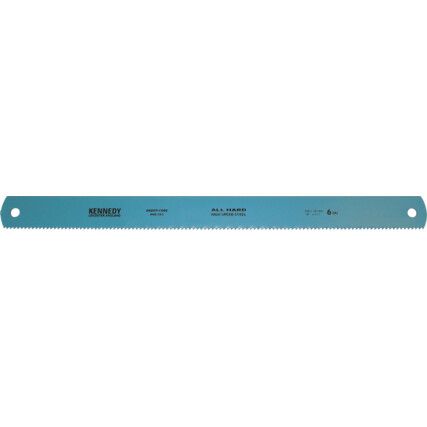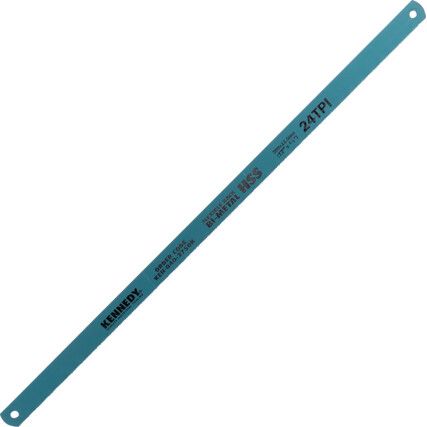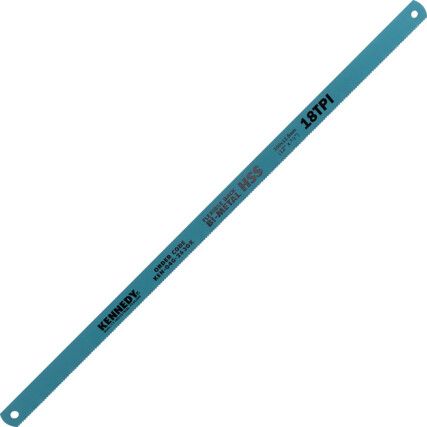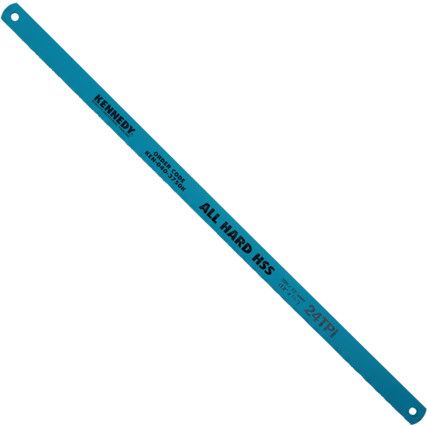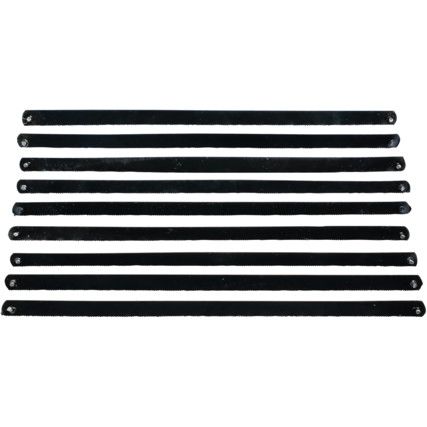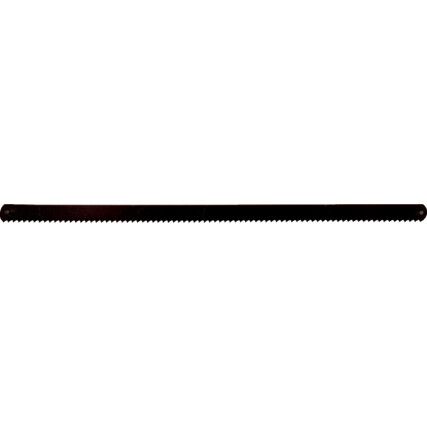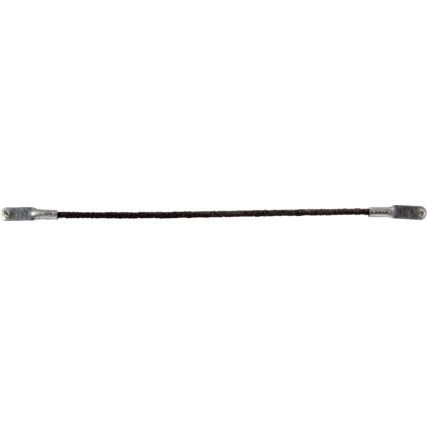Saw Blades
Get high-performance saw blades online now at Cromwell. We stock a wide variety of saw blade sizes and materials to suit all applications from well-known, quality brands like Starrett®, Eclipse Blue®, Bahco® and our own brand, Kennedy®.
What are saw blades?
Designed to fit into the handle or frame of a manual hand saw, saw blades are a versatile design that features a cutting edge made up of a series of sharp teeth. They can be used to cut a range of materials, and are categorised by their shape, thickness and TPI (teeth per inch).
Why saw blades?
Saw blades are versatile and changeable. Larger teeth in lesser numbers are manufactured to provide faster rough cuts. While at the opposite end of the spectrum, saw blades with many smaller teeth are slower and designed specifically for finer materials.
When are saw blades used?
Fitted to handsaws, saw blades are used when a task requires a gentler touch than a power tool can provide. Handsaws provide the type of finish and detail that simply cannot be achieved by a power saw alone.
Saw blade types
Produced by type, saw blades are made for a specific manual saw frame. Some saws, like a wood saw for example feature a fixed blade. These are sharpened when they become dull, or the entire tool is replaced. All removable and replaceable blades should be shatterproof to ensure safe practice, while teeth should be milled and set to maintain a clean cut and a longer tool life.
• Bow saw - This long, straight blade is made for heavy-duty cutting sometimes has dual-shaped teeth in a repeating pattern.
• Hacksaw - Two durable metals electron-beam welded together provides a tough and flexible blade, usually high-speed steel combined with steel.
• Junior hacksaw - A smaller version of the hacksaw, the blades are designed to cut plastic and thin metals. The teeth are much smaller for slower, neater cuts.
• Fret & Coping saws - Designed for cutting softer materials, these blades are usually quite thin with a larger number of small teeth.
• Mitre saw - This blade is long and thin and designed for
cutting smaller pieces of hardwood or softwood. Blades tend to range in length between 500mm-630mm.
• PVC saw - This specialist saw is designed to cut through plastic, and cuts on the push and the pull stroke. TPI ranges between 10-14 teeth, which are small and sharp for neater cuts that won't damage the material.
• Compass saw - Designed for cutting curves in thick material, this blade is long and tapered with a high TPI, (between 8-10 teeth).
Considerations when choosing saw blades
• Saw type - this is an obvious one, as in most cases you won't be able to fit the incorrect blade to a saw.
• Material - some blades, like a hacksaw will cut through pretty much anything, while other blades are designed for wood cutting only.
• Blade length - some saws have an adjustable frame to take different lengths of blade. However, it's best to check the manufacturer's instructions on blade length before committing to a purchase.
• Cut type - take an overview of the cut you want to make to help decide on the blade you need.
• TPI - the teeth per inch on the blade will provide the desired cut on the material. Larger and fewer teeth handle tough materials, while smaller sized teeth in larger numbers are ideal for precision work.
Saw blades jargon buster
We want to make our range easy to shop and so have broken down and explained a relevant safety standard for hacksaw blades so you can make an informed purchase.
What does the safety standard BS 1919-1:1993 mean?
BS 1919-1:1993 outlines the dimensions and test requirements for hacksaw blades during manufacture.
Let's break it down...
• BS - This is an abbreviation for the British Standards Institute which has published this standard.
• 1919 - This is the assigned legislation number.
• 1 - This highlights the part of the document that refers to hacksaw blades.
• 1993 - This is the year that this update was published and supersedes the 1983 version.
FAQs
Why is a hacksaw blade harder than a wood saw blade?
Hacksaws were designed primarily to cut through metals. While both of these materials are manufactured in various forms and densities, a hacksaw's blades must be harder than those of a wood saw to ensure their ability to perform as required.
What's the difference between a push stroke blade and a pull stroke blade?
Blades that cut on the push stroke are designed with their teeth facing away from the operator. They're made for cutting tougher materials since more pressure can be put on the push stroke than the pull. Saws that cut on the pull stroke have teeth that face toward the operator. They tend to have thinner blades and are ideal for neater, precision cuts.

